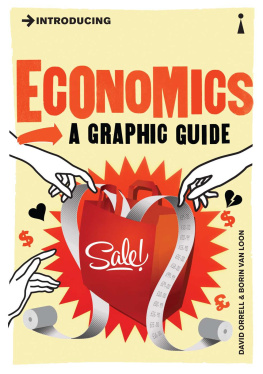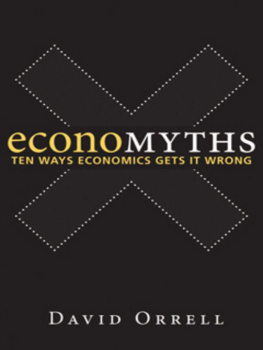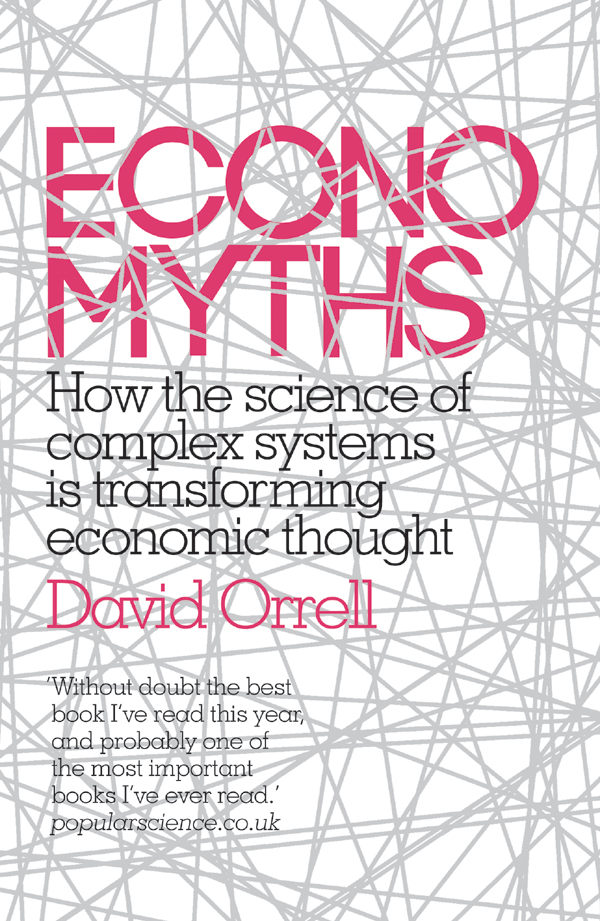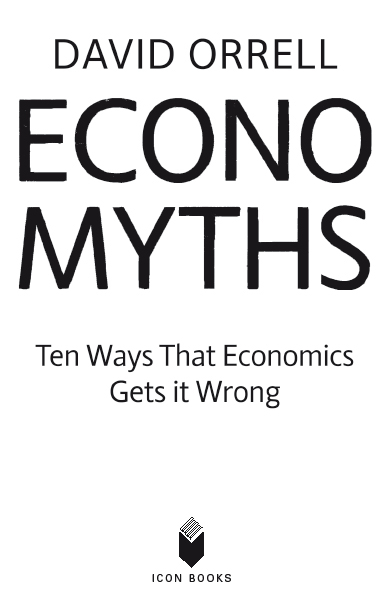
Published in the UK in 2010 by
Icon Books Ltd, Omnibus Business Centre,
3941 North Road, London N7 9DP
email:
www.iconbooks.co.uk
This electronic edition published in 2010 by Icon Books
ISBN: 978-1-84831-199-2 (ePub format)
ISBN: 978-1-84831-200-5 (Adobe ebook format)
Printed edition (ISBN: 978-1-84831-148-0)
sold in the UK, Europe, South Africa and Asia
by Faber & Faber Ltd, Bloomsbury House,
7477 Great Russell Street, London WC1B 3DA
or their agents
Printed edition distributed in the UK, Europe, South Africa and Asia
by TBS Ltd, TBS Distribution Centre, Colchester Road,
Frating Green, Colchester CO7 7DW
Printed edition published in Australia in 2010
by Allen & Unwin Pty Ltd,
PO Box 8500, 83 Alexander Street,
Crows Nest, NSW 2065
Text copyright 2010 David Orrell
The author has asserted his moral rights.
No part of this book may be reproduced in any form, or by any
means, without prior permission in writing from the publisher.
Typeset by Marie Doherty
C ONTENTS
Chapter 1:
Chapter 2:
Chapter 3:
Chapter 4:
Chapter 5:
Chapter 6:
Chapter 7:
Chapter 8:
Chapter 9:
Chapter 10:
For Beatriz
David Orrell is an applied mathematician and author of popular science books. He studied mathematics at the University of Alberta, and obtained his doctorate from Oxford University on the prediction of nonlinear systems. His work in applied mathematics and complex systems research has since led him to diverse areas such as weather forecasting, economics, and cancer biology. His work has been featured in the New Scientist , World Finance and the Financial Times , and on BBC Radio. He lives and works in Oxford.
I NTRODUCTION
Every dogma must have its day.
H.G. Wells (18661946)
The year 2008 was going to be a prosperous one for the financial markets, according to forecasters polled by Bloomberg.com at the start of the year. None foresaw a loss, and the average prediction was for a gain of 11 per cent. They were blissfully unaware that one of historys biggest financial earthquakes was already taking shape beneath their feet. By year-end the S&P 500 index was down 38 per cent, $29 trillion had slipped through the cracks appearing in global markets, and many of the foundations of the world economy lay in ruins.
The credit crunch had a number of phases, but perhaps the pivotal event was the collapse of the financial services firm Lehman Brothers in September 2008. With over $600 billion in assets, this was the largest bankruptcy in US corporate history. Lehman was also one of the key nodes in the financial network, and its extinction sent the crisis into a new and extremely dangerous phase. Many feared that the entire global financial system would break down completely. That didnt happen, and markets eventually recovered from their near-death experience, but the aftershocks of those events are still being felt around the world.
The failure of economists to predict the credit crunch or the ensuing world recession was not atypical. As shown later, financial forecasts have an extremely poor track record of success, even when based on sophisticated mathematical models. This time, though, not only did the models fail to predict the crash they actually helped cause it.
In the years preceding the crash, financiers had become increasingly reliant on quantitative mathematical models to make their decisions. Even if models couldnt predict what exactly would happen in the future, they were supposed to be able to calculate risk. For example, in order to figure out how much risk a package of loans incurred, they needed only to make a statistical calculation using a simple formula or risk model, based on standard economic theory. This appeared to work well so well that quantitative analysts began to use the models to take bigger and more sophisticated bets.
Even before the crisis was in full swing, though, there were signs that the models were failing to capture the true risks of the economy. On 11 August 2007, a year before Lehman Brothers went bust, some unexpected market turbulence brought on by a decline in US house prices led one of their employees to remark that Events that models predicted would happen only once in 10,000 years happened every day for three days.
While that sounds most unusual, the chief financial officer at Goldman Sachs went even further: We were seeing things that were 25-standard deviation moves, several days in a row. To unpack that statement, a 25-standard deviation event is something that is not expected to happen even once in the duration of the universe let alone each day of a week.
You dont need to be a mathematician to see that the models that lay at the core of the world financial system had something seriously wrong with them. But how could so many highly-paid experts have turned out to be completely mistaken about the workings of the economy? As Queen Elizabeth said on a visit to the London School of Economics: Why did no one see it coming?
Storm warnings
Actually, not everyone was as surprised by the crisis as were the quantitative analysts and their mathematical models. As early as 2003, the investor Warren Buffett described the complex products known as derivatives, which played a key role in the credit crunch, as financial weapons of mass destruction. The same year, well before the collapse of Lehman sent a tsunami of destruction through the banking system, the network scientist Albert-Lszl Barabsi warned of the potential of cascading failures in the economy.
As with preceding crashes, the causes of the credit crunch have been much analysed and debated. The obvious lightning rod for criticism was of course the bankers themselves, who were earning fabulous salaries, and even more fabulous bonuses, for taking risks that turned out to have cataclysmic consequences for the real economy when the bets went wrong. Other culprits were the regulators, who failed to keep up with the pace of innovation in financial products; the American homeowners who took out subprime loans they could never afford to repay; the central banks, who (Trichets comments aside) often seemed to be in denial about the extent of the problem; and the economists who designed the flawed mathematical models in the first place.
This still leaves the question of how so many people in the financial industry could have been misled about the risks they were running and unaware of the dangers. The reason, I believe, is that the fundamental assumptions that form the basis of economic theory are flawed. This means that not just the mathematical models, but the actual mental models that economists have of the economy are completely wrong.
This problem goes well beyond the calculation of financial risk. The main problem with our economic system is not that it is hard to predict, but that, despite its enormous productivity and creativity, it appears to be in a state of ill health. The economy is unfair, unstable, and unsustainable. But economic theory has no way of dealing with these issues either.
The economy is unfair. Economic theory is supposed to be about optimising the allocation of resources. However, the reality is that the rich really do get richer. In 2009 one hedge fund manager earned over $2 billion, while over a billion people earned less than $1 a day. Thats a strange way to allocate resources.
The economy is unstable. According to theory, the invisible hand should keep asset prices at a stable level. But in reality, assets including oil, gold, and hard currencies are subject to enormous gyrations. In late 2007 the price of oil surged to over $140 a barrel, then plunged to under $40, all in the space of a few months. Oil is often called the lifeblood of the economy, but our own blood supply is much better regulated. For a while it seemed the economy was having a cardiac event.


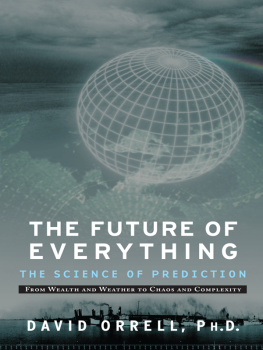
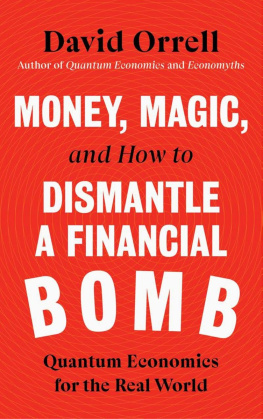
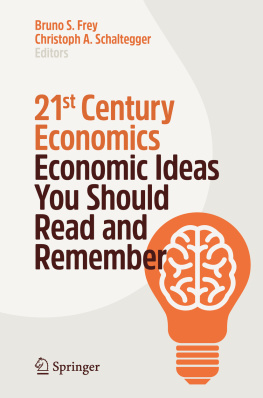

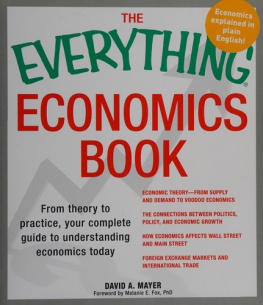
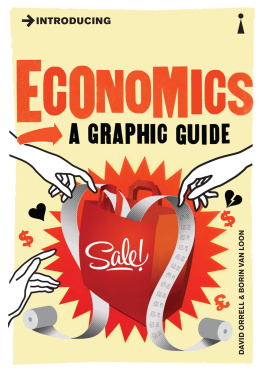
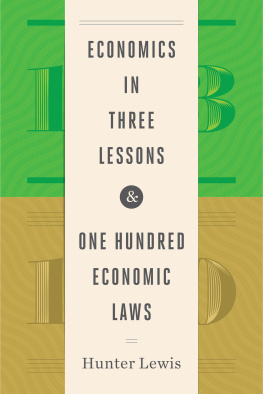

![David Orrell [David Orrell] - Quantum Economics](/uploads/posts/book/114631/thumbs/david-orrell-david-orrell-quantum-economics.jpg)
